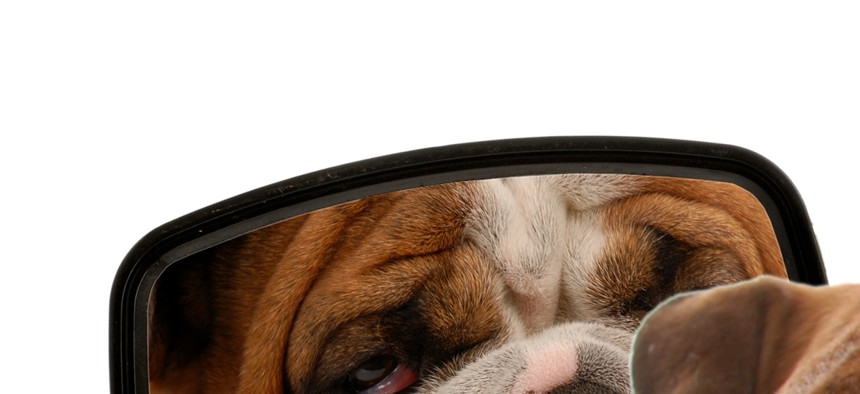
WilleeCole Photography/Shutterstock.com
Your Automatic Self Versus Your Aware Self
Sometimes following your instincts can hold you back as a leader.
Bethany, a leader in a Fortune company, knew she had an issue with expressing quick and deadly (metaphorically speaking) anger. It would come out of nowhere in a flash that silenced her stakeholders.
Dirk, the CEO of a nonprofit, interrupted people. He cut them off or talked over them to get the first, second, and last word in.
Amy, a middle manager in a government organization would roll her eyes in impatience and cross her arms over her chest in disagreement with others.
Perhaps these seem like insignificant behaviors, but as organizational leaders, they had become barriers to effectiveness and were keeping these leaders from making the kind of impact they were capable of. Their behaviors had become automatic habits—something we all have that are difficult for most of us to change.
Your Automatic Self
Your body and your brain love to be on automatic, to have habits that are fine-tuned through years of unintentional practice that become ingrained and often work well for you. Even bad habits like those described above can work to your advantage, but the downside is that they will also—at some point—work against you.
These automatic habits conserve your energy, literally. When you react reflexively, you save brain power, physical effort and even emotional energy. Your brain has built entire structures around your habits—with connections built specifically so you don’t have to think or expend additional energy doing something in a new way. But yet, these habits can harm your ability to influence others or to develop strong healthy relationships that will help you to live to your full potential.
You’ll need to work hard to change them, but if you are the driven leader I know you to be, you can do it.
Enter Your Aware Self
Perhaps you’ve received some insightful feedback that makes you aware of a habit that isn’t serving you well. You’ve decided that you want to change this habit and trade it in for something that is more impactful.
Every impulse you have to make a move (whether its body language, words from your mouth, or expressing anger) arises from somewhere. It happens in a millisecond, but being intentional enough to observe the sensation and where it comes from is the first step toward replacing a habit you don’t want with a new one you choose:
- Observe in real time where the sensation arises (hint: you might find it surprising that it will be in your body, not your head). For example, the sensation of anger may be noticed initially as it burns in your throat or your face becomes hot. The sensation of impatience or fear may be felt as a twisting in your gut.
- Center and ground when that sensation happens. This only requires a simple move of feeling your feet solidly on the floor/ground and shifting your body to sit or stand up straight, shoulders back and chin up. Notice how this minor shift in your body can also shift your perspective.
- Make a choice to do something different rather than express your normal behavior: stay quiet, sit still, take a belly breath or write down what you want to say (instead of acting it out). Play with what might work for you, and when you find it, repeat it. Over and over again. Until this new liberating habit becomes automatic.
You’re on your way. Keep practicing! Who can help you in your journey to develop new, healthy habits? How can they help?
Mary Jo Asmus is an executive coach and a recovering corporate executive who has spent the past 12 years as president of Aspire Collaborative Services, an executive consulting firm.
(Image via Artco/WilleeCole Photography)
NEXT STORY: The Economic Case Against Majoring in Fun Things






